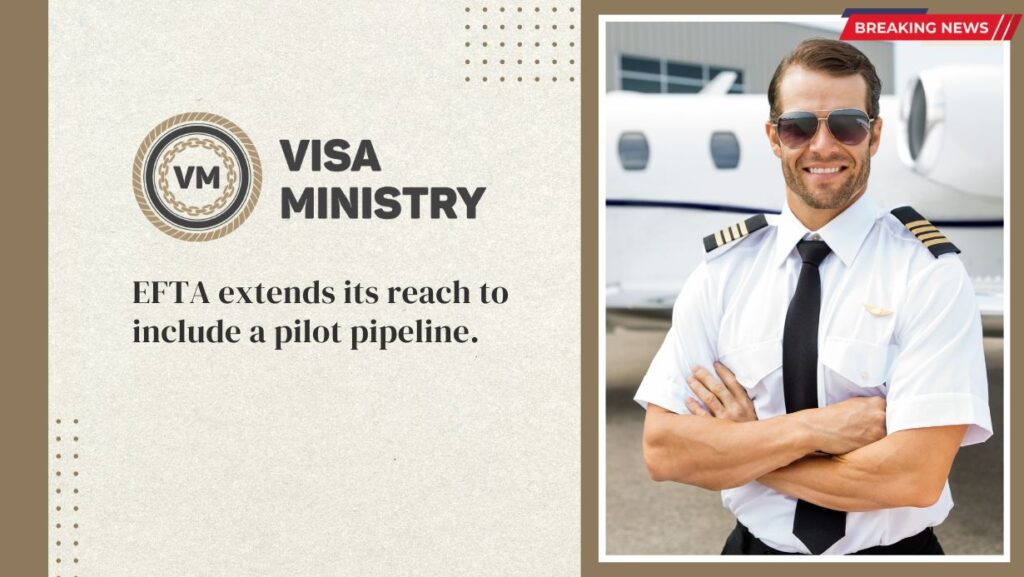There are almost 120 graduates from the current batch of 290—23 nationalities and 27 women—who are already employed by Emirates as full-time pilots. These aspirational and driven individuals are cadets of the Emirates Flight Training Academy (EFTA), forming the next generation of pilots vital to the aviation industry.
EFTA, which was founded with an emphasis on the national cadet pilot program for Emirates, currently provides cadets from all over the world with their top-notch instruction. In addition to the amazing success of its grads, all of whom were hired by Emirates following a rigorous hiring process, the academy is soaring thanks to the incorporation of three brand-new Diamond planes into its training curriculum.
The cadets range in age from 17 to 26 years old, however the bulk are fresh high school graduates. As a matter of fact, an Emirates cabin crew member has fulfilled the rigorous qualifying requirements of EFTA and is now a cadet.
“EFTA is fully focused on establishing a reliable stream of pilots for the aviation industry, which has been staring at scarcity in the short to long term,” stated Captain Abdulla Al Hammadi, Divisional Vice President of Emirates Flight Training Academy. “We are providing ambitious cadets with a visionary academy based in an iconic and one of the safest cities that is also one of the largest aviation hubs on the planet.” With over fifty highly qualified teachers and the support of Emirates, the largest international airline in the world, we offer one of the most advanced cadet training programs available. Seeing the unity and cooperation among our cadets as they graduate with the greatest levels of abilities and competences needed by commercial pilots, ready for the real world, is encouraging.
The Diamond DA42-VI light piston twin-engine aircraft, which has successfully introduced multi-engine piston training at the academy, is currently another aircraft that EFTA’s cadets fly. Essentially, this implies that cadets receive training on light jets with one, two, and three engines. Among flight training academies, which typically train cadets on one or two types of aircraft, this is an unusual occurrence.
Instructors from EFTA will be available to discuss details of the Academy’s fleet and cadet training program while the organization displays its Diamond DA42-VI and Cirrus SR22 aircraft at the Dubai Airshow.
Following the epidemic, occupations in flight deck have experienced a significant upsurge in demand. Aviation is becoming a more sought-after vocation due to factors such as rising salaries, fast-paced career paths, rapid airline expansion, sophisticated aircraft, and rising travel demand. Oliver Wyman’s most recent research indicates that by 2026, there would be a 24,000 pilot shortage compared to the current deficit of roughly 17,000 available pilots.
In order to provide UAE citizens and foreign students who have never flown before with flight training, Emirates introduced EFTA in 2017. Every graduate has the exclusive chance to go through the hiring process at Emirates.
Modern fleet of 29 training aircraft, including 4 Embraer Phenom 100EV very light jets, 3 Diamond DA42-VI light piston twin-engine aircraft, and 22 Cirrus SR22 G6 single-engine pistons, are combined with state-of-the-art learning technology at the Academy.
Spread across 12.5 million sq.ft (1.2 million sq.m), or 200 football fields, EFTA’s state-of-the-art complex houses 36 contemporary classrooms, 6 full motion flight simulators, a separate air traffic control tower, and a 1,800-meter runway. Cadets reside on campus in individually designed studio apartments that are completely furnished and offer an excellent array of social events, recreational opportunities, and fine food.
Ground school (52 weeks): Two 86-inch touchscreens with custom training software designed just for EFTA are installed in each of the 36 classrooms. Cadets receive at least 1,100 hours of instruction on the ground, and they use their own digitally connected devices to access the curriculum in an interactive learning environment. During the 52-week, 272-hour Flying Phase, cadets receive training on three different types of training aircraft and simulators.
These are the words of two EFTA alums Who are presently Cadet Pilots With Emirates:
Australian native Thomas Saunders, a cadet pilot with Emirates, stated: “I’ve been fascinated by how these big machines could stay in the sky from a very young age, and that has led me down the most amazing career path.” One excellent way to get a job at the top airline in the world is through Emirates Flight Training Academy. Additionally, I believed that an airline with such high standards and a strong focus on quality would inevitably provide the greatest mentoring and training in the aviation industry. My intuition turned out to be correct.
“The EFTA cadet group is incredibly close-knit and cooperative. Our training brings out the best in us and positions us for a long, fulfilling, and prosperous career. All the necessities are conveniently located near your home, and the facilities and infrastructure are quite magnificent.
“It felt like a dream when I took my first flight. I had only ever dreamed of this: it was just me in control, nature at its most beautiful, and the breathtaking Dubai scenery below me. Prospective cadets thinking about a career in aviation should persevere and embrace the ups and downs since the experience shapes character and the results are beyond anything you could have imagined.
Australian citizen Jordan Engeler, an Emirates cadet pilot, stated: “I’ve always had a deep fascination for the aviation industry and the sense of freedom it offers.” I found it immensely fascinating to think that I could pilot a highly advanced aircraft, travel the sky, and see the world from a different angle.
The three main aspects of EFTA that I cherished were its world-class training facilities, knowledgeable and encouraging instructors, and a diverse and welcoming community. In the aviation sector, Emirates is well known for its remarkable dedication to excellence, innovation, and safety. These ideals are shared by EFTA, which also provides an excellent training program that exactly matched my goal of becoming a highly experienced pilot. With its cutting-edge facilities, contemporary fleet of aircraft, and knowledgeable instructors, EFTA provided the perfect setting for me to grow and develop.
My first solo flight was an incredibly thrilling experience. There was a mixture of anxiety and excitement as I accelerated down the runway, but as the wheels came off, it felt like a dream come true. It was both empowering and humble to realize that I was the only one in charge of this flight, and I could feel the aircraft reacting to my commands.
Source- Travel daily

